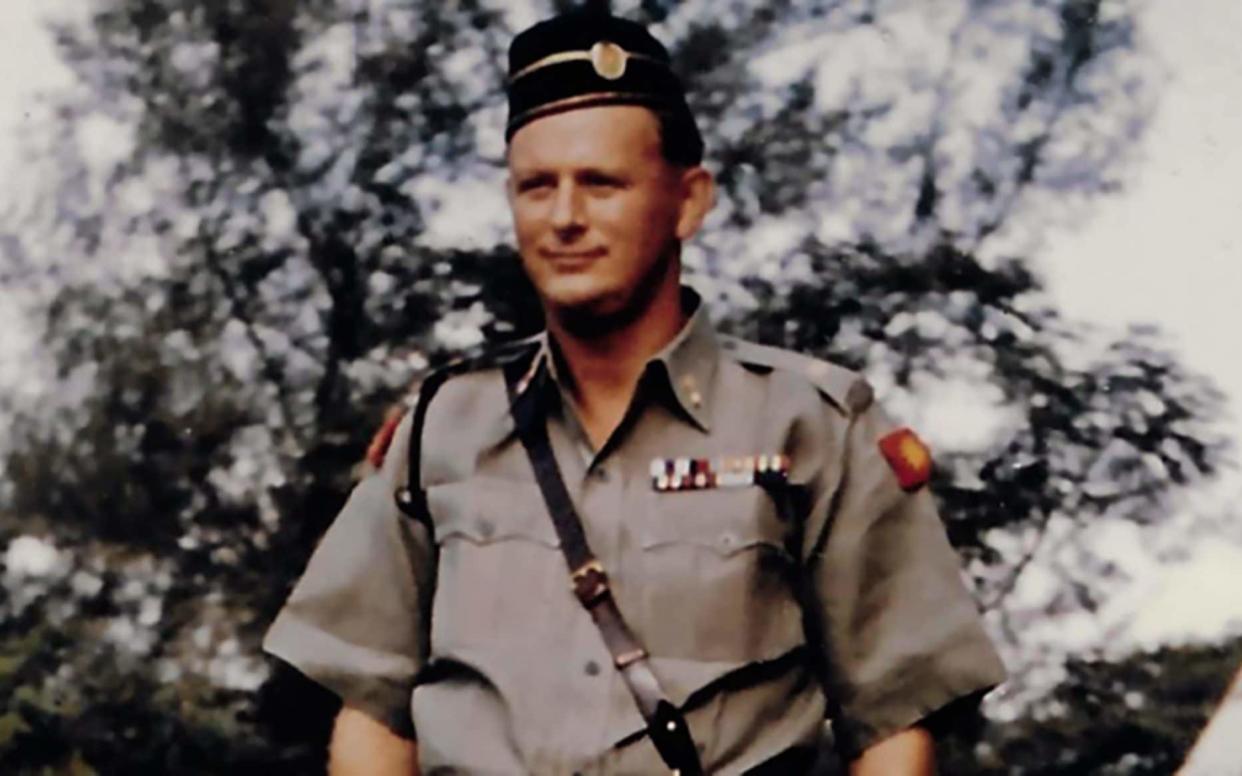Colonel Peter Castle-Smith, Royal Engineer awarded an Immediate MC for his bravery during the invasion of Sicily – obituary

Colonel Peter Castle-Smith, who has died aged 99, was awarded an MC in Operation Husky, the invasion of Sicily in 1943.
In July 1943 Castle-Smith was a lieutenant in command of a section of 295 Army Field Company Royal Engineers, part of 4th Armoured Brigade. On the night of August 15 he embarked with a force from Catania and sailed north-east up the Sicilian coast before landing at Scaletta, about 15 miles short of Messina.
He led the assault on the beach; his task was to prevent the Germans blowing prepared demolitions along the strategically important coast road. The railway tunnel at Capo D’Ali was a prime site for demolition. Castle-Smith ordered his men to keep clear while he made a personal reconnaissance.
He ran through the tunnel despite the danger and, as he emerged, the Germans blew it. At great risk, he succeeded in taking prisoner three members of the demolition squad before they were able to block the road. He was awarded an Immediate MC.
Peter Maurice Castle-Smith was born in Egypt on October 10 1922. His father, Major Hugh Castle-Smith, had been ADC to King Fuad. Young Peter went to Marlborough before going up to Christ’s College, Cambridge, to read Mechanical Sciences. He left after six months and joined the Army.
In 1942 he was commissioned into the Corps of Royal Engineers and was posted to 6th (Rocket) Field Squadron RE, part of 24th Armoured Brigade, 8th Armoured Division.
In the Battle of El Alamein, he was a recce officer. Two of his Dingo scout cars were blown up on mines but he was unhurt. It was slow and dangerous work sweeping the ground for mines. Mine detectors were not very reliable so bayonets were used instead. Anti-personnel mines were set off by a tripwire. They would jump about eight feet into the air and discharge a hail of metal pieces.
Corridors had to be taped along which the tanks could advance but these were sometimes blocked by stricken vehicles and became vulnerable to attack from the air. If a lot of wire had to be cut, Bangalore torpedoes – steel pipes crammed with explosives – were used.
In April 1943, Castle-Smith was posted to 295 Field Company RE to train for the invasion of Sicily. After the action in which he was awarded his MC, he landed on the Italian mainland and linked up with the force that landed at Salerno.
He returned with his unit to England to train for the Normandy landings, but during an exercise with his troop on his motorcycle he was involved in an accident and broke his wrist. As a result, he was put on general duties and worked in the offices where General Eisenhower, the Supreme Allied Commander, was based.

While delivering messages, he learnt what was absolutely top secret, the date of the proposed invasion and the location of the landing. Castle-Smith said afterwards that he felt the weight of the world on his shoulders. He did not dare stop at a pub to relax with friends in case, unwittingly, he gave something away.
In early August he rejoined his troop in Normandy. One of the most important jobs they had was to make holes in the thick hedges to let the tanks through. He was wounded in Belgium and ended the war as second-in-command of 233 Field Company RE.
Castle-Smith was posted to India as an instructor at the Engineer Officer Training School at Bangalore. He ran a jungle-bridging training camp but found time for hunting and shooting game.
After the Japanese surrender, he obtained a regular commission and, in 1947, he was posted to the Ordnance Survey, the national mapping agency. In 1954 he commanded 64 Field Park Squadron RE in Korea. It was after the Armistice, and the work consisted mainly of bridging and stores. In 1959, the last year of the Emergency in Malaya, he commanded 2 Engineer Squadron, Federation Malay Army.
His final postings included appointments on the directing staff at the Royal Military College of Science, the Inspectorate of Fighting Vehicles and Mechanical Equipment and the Military Engineer Experimental Establishment. After two years as Director General Fighting Vehicles and Equipment at the MoD, in 1974 he retired in the rank of colonel.
He lived on the banks of the River Tay, near Dunkeld, Perth & Kinross. He had a passion for fishing, mainly for salmon on many of the Scottish rivers, and tied his own flies using feathers from his days in India. He was also a silversmith with his own Edinburgh hallmark and made some beautiful cups and tumblers.
In 1949 Peter Castle-Smith married Jean Curtis (née Rutherford), the widow of an RAF officer. She predeceased him and he is survived by their two daughters.
Peter Castle-Smith, born October 10 1922, died September 8 2022


